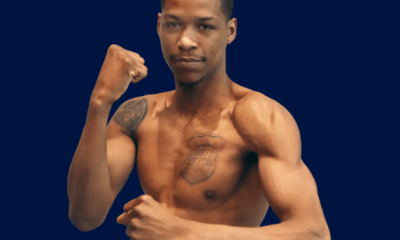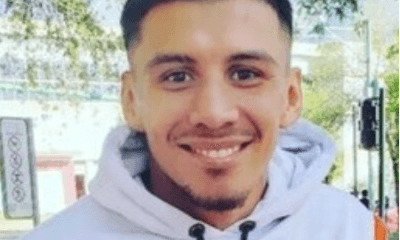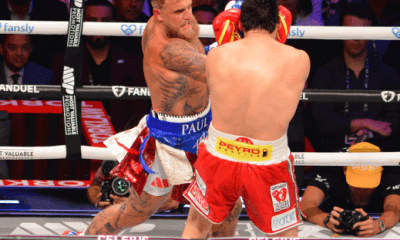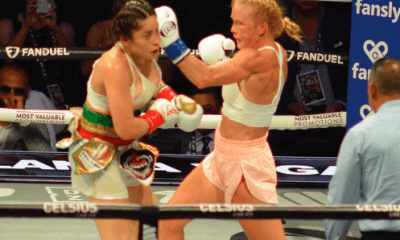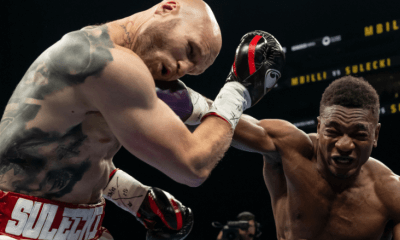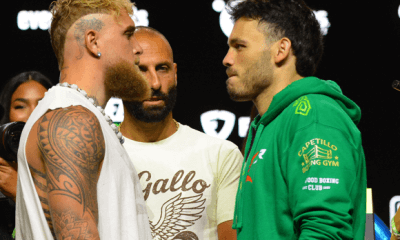Featured Articles
The Hauser Report: St. Patrick’s Day at Madison Square Garden
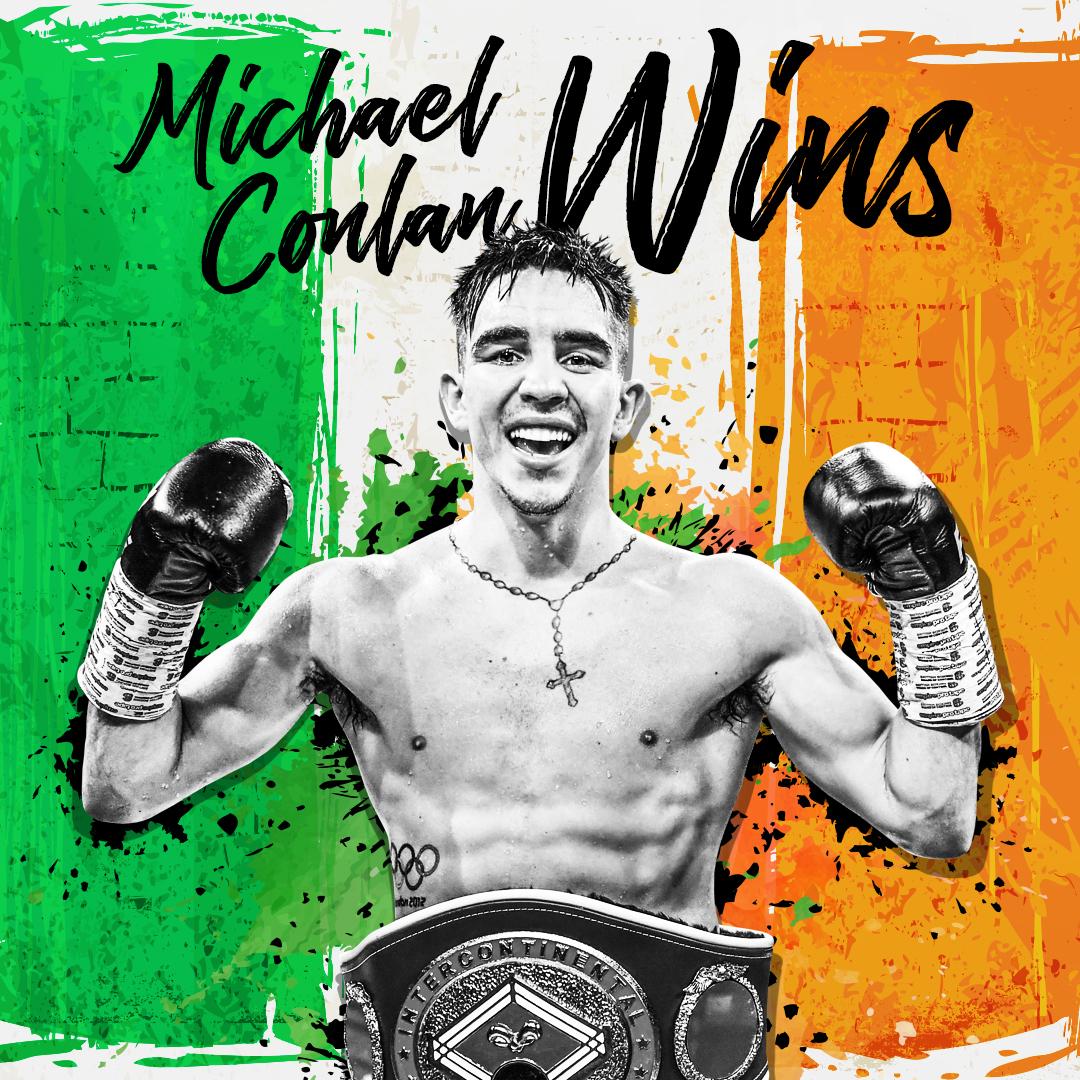
Boxing’s three “major leagues” showed their respective wares this past weekend. On Friday night, DAZN presented a nine-bout card in conjunction with Matchroom USA. On Saturday, Fox and Premier Boxing champions teamed up for the Errol Spence vs. Mikey Garcia pay-per-view event. Then, on Sunday, ESPN and Top Rank had their turn in the form of a St. Patrick’s Day card at Madison Square Garden headed by Belfast native and former Olympian Michael Conlan.
The star of the show was St. Patrick, the fifth-century saint widely credited with bringing Christianity to Ireland. In his honor, there were three Irishmen on the card: Conlan, flyweight Paddy Barnes, and welterweight Lee Reeves. That said; there was a Hispanic flavor to the proceedings. The sixteen combatants included Eduardo Torres, Victor Rosas, Juan Tapia, Ricardo Maldonado, Adriano Ramirez, Oscar Mojica, Joseph Adorno, John Bauza, Luis Collazo, Ruben Garcia Hernandez, and two Vargases (Josue and Samuel).
Irish-Americans have a record of supporting Irish fighters, particularly on St. Patrick’s Day. This was no exception. The announced crowd of 3,712 arrived early. During the final pre-fight press conference, Top Rank president Todd duBoef had paid homage to the fans, although he did voice the view that, on St. Patrick’s Day, “Their cognitive behavior is manipulated by the beer.”
On fight night, the in-arena music was chosen accordingly. What Shall We Do With a Drunken Sailor? was played twice over the Hulu Theater sound system.
There was also green lighting.
Lee Reeves (2-0, 2 KOs) of Limerick, Ireland, opened the show with a four-round decision over Edward Torres.
In the third bout of the evening, Vladimir Nikitin (2-0, 0 KOs) won a majority decision over Juan Tapia. Nikitin defeated Conlan in the quarter-finals at the 2016 Olympics. Presumably, they’ll fight again at a time of maximum opportunity for Conlan.
Flyweight Paddy Barnes (5-1, 1 KO) of Belfast was a teammate of Conlan’s at the 2016 Olympics but lost in the first round to Spain’s Samuel Carmona. On St. Patrick’s Day, Barnes was matched against Oscar Mojica (11-5-1), who had one career knockout and had gone 3-5-1 in his previous nine outings.
Mojica broke Barnes’s nose in round one and knocked him down with a body shot in the second stanza (although to the mystification of those in the press section, referee Danny Schiavone waved off the knockdown). It was a spirited outing in which both men were too easy to hit for their own good. Barnes rallied nicely in the second half of the bout and arguably did enough to win the decision. But two of the three judges thought otherwise, leading to a 58-56, 58-56, 56-58 verdict in Mojica’s favor.
In the next-to-last fight of the evening, Luis Collazo (38-7, 20 KOs) took on Samuel Vargas (30-4-2, 14 KOs).
Collazo now 37 years old, reigned briefly as WBA welterweight champion twelve years ago. Since then, he had cobbled together twelve victories (an average of one per year) against six losses in eighteen fights. Vargas had one win in his previous three outings and has never been able to get the “W” against a name opponent.
It was a phone booth fight, which worked to Collazo’s advantage because Luis’s legs aren’t what they once were. The decision could have gone either way. Two judges scored the bout 96-94; one for Collazo and the other for Vargas. Frank Lombardi turned in a wide-of-the-mark 98-92 scorecard in Collazo’s favor.
Then it was time for the main event.
Conlan (10-0, 6 KOs) is best known to boxing fans for having given the finger (two middle fingers, actually) to the judges after coming out on the short end of a decision in the second round of the Rio de Janeiro Olympics. His skill set is better suited to the amateur than professional ranks. But his Irish heritage is a significant marketing plus. And Top Rank specializes in both savvy matchmaking and building narratives.
This was the third consecutive year that Conlan, now a featherweight, celebrated St. Patrick’s Day weekend by fighting at Madison Square Garden. His ringwalk was marked by Irish-themed pageantry. And Ruben Garcia Hernandez, his opponent, was tailor-made for him.
Conlon controlled the fight with his jab. Nothing much else happened. “Mick” emerged victorious 100-90 on all three judges’ scorecards. And the fans went home happy because their man won.
* * *
The sad news that New York Mets pitching great Tom Seaver is suffering from dementia and will retire from public life is a reminder that all people from all walks of life are susceptible to the condition, not just fighters.
Seaver was on the list of A+ athletes who rose to prominence in the 1960s when advances in television were redefining the sports experience. Muhammad Ali was at the top of that list. Years ago, sportswriter Dick Schaap told me about an evening he spent with Ali and Seaver.
“In 1969, the year the Mets won their first World Series,”Schaap reminisced, “I spent the last few days of the regular season with the team in Chicago. Ali was living there at the time. I was writing a book with Tom Seaver, and the three of us went out to dinner together. We met at a restaurant called The Red Carpet. I made the introductions. And of course, this was the year that Tom Seaver was Mr. Baseball, maybe even Mr. America. Ali and Tom got along fine. They really hit it off together. And after about half an hour, Ali in all seriousness turned to Seaver and said, ‘You know, you’re a nice fellow. Which paper do you write for?’”
Thomas Hauser’s email address is thomashauserwriter@gmail.com. His most recent book – Protect Yourself at All Times – was published by the University of Arkansas Press. In 2004, the Boxing Writers Association of America honored Hauser with the Nat Fleischer Award for career excellence in boxing journalism.
Check out more boxing news on video at The Boxing Channel
To comment on this story in The Fight Forum CLICK HERE
-

 Featured Articles3 weeks ago
Featured Articles3 weeks agoAvila Perspective, Chap. 330: Matchroom in New York plus the Latest on Canelo-Crawford
-

 Featured Articles2 weeks ago
Featured Articles2 weeks agoVito Mielnicki Jr Whitewashes Kamil Gardzielik Before the Home Folks in Newark
-
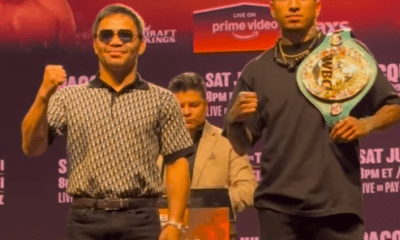
 Featured Articles4 weeks ago
Featured Articles4 weeks agoAvila Perspective, Chap 329: Pacquiao is Back, Fabio in England and More
-

 Featured Articles3 weeks ago
Featured Articles3 weeks agoOpetaia and Nakatani Crush Overmatched Foes, Capping Off a Wild Boxing Weekend
-

 Featured Articles2 weeks ago
Featured Articles2 weeks agoCatching Up with Clay Moyle Who Talks About His Massive Collection of Boxing Books
-

 Featured Articles4 weeks ago
Featured Articles4 weeks agoFabio Wardley Comes from Behind to KO Justis Huni
-

 Featured Articles1 week ago
Featured Articles1 week agoMore Medals for Hawaii’s Patricio Family at the USA Boxing Summer Festival
-
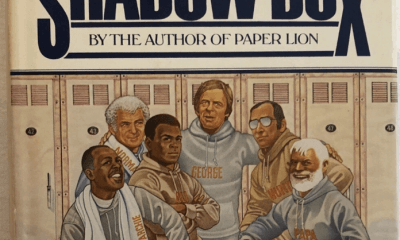
 Featured Articles4 weeks ago
Featured Articles4 weeks agoDelving into ‘Hoopla’ with Notes on Books by George Plimpton and Joyce Carol Oates

